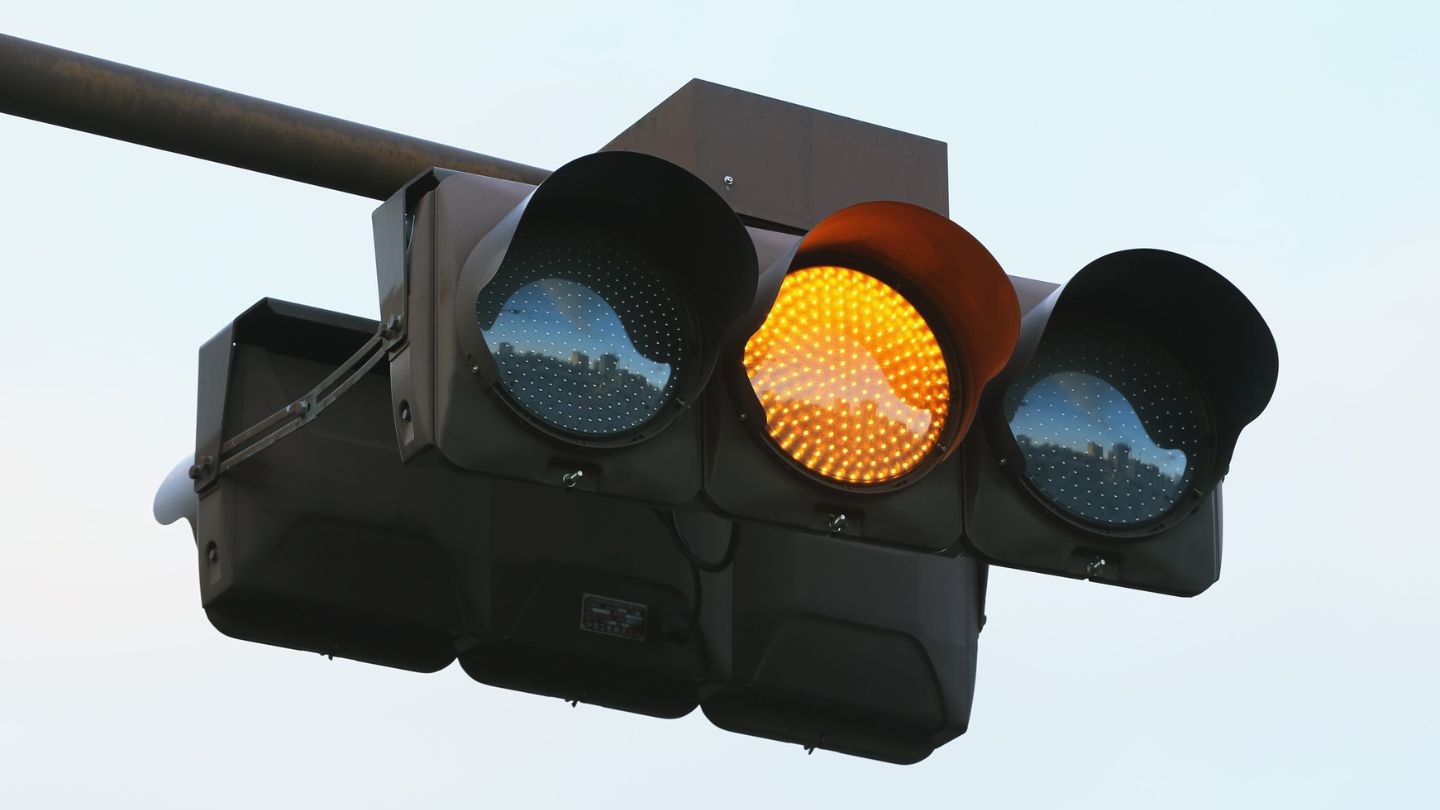Preparing for your driving test in Dallas means learning how to avoid common road hazards in Dallas during your driving test. This blog provides practical tips on recognizing traffic signs, navigating school zones, mastering lane changes, handling intersections, and dealing with everyday road hazards. These essential tips will help you stay safe and boost your confidence on test day.
Key Takeaways
- Understanding and responding correctly to traffic signs is crucial for passing your driving test and ensuring road safety.
- Navigating school zones requires extra caution, including reduced speed limits and awareness of pedestrians.
- Regular vehicle inspection and mental preparation on test day significantly enhance performance and boost confidence.
Recognize and Respond to Traffic Signs
Traffic signs are the unsung heroes of road safety. They provide essential information for regulating, warning, and guiding drivers, making their understanding vital for safe driving. Recognizing and responding correctly to these signs is essential for both your driving test and daily driving.
Understanding common traffic signs and how to respond to them effectively is key to safe driving.
Identifying Common Traffic Signs
Traffic signs can be grouped into four main categories:
- Regulatory
- Warning
- Work zone
- Guide signs
In Texas, hazard obstruction signs are common. Recognizing these signs is crucial for navigating Dallas streets safely.
Understanding the difference between a stop sign and a yield sign can significantly impact your driving test performance. Familiarize yourself with these signs and their meanings to avoid confusion during your road test.
Proper Response Techniques
Proper responses to traffic signs and traffic rules are essential to avoid automatic failures during driving tests. For example, stop completely at stop signs and check for oncoming traffic. Similarly, slow down at yield signs and give the right of way to other vehicles.
Practicing these actions diligently will help you drive and pass your driving test with flying colors. Once you have passed, as a licensed driver, you will feel more confident in your driving abilities.
Navigating School Zones Safely
School zones are areas that require extra caution and vigilance. In Texas, school zone speed limits can drop to a maximum of 15 mph during designated times. Correctly responding to traffic signs, like slowing down in school zones, is essential for passing your driving test.
Understanding the indicators and practicing safe driving will help you navigate school zones safely.
Understanding School Zone Indicators
School zone signs are crucial for indicating areas where children are likely to be present. These signs often come with flashing lights that alert drivers to reduce speed and be vigilant for children. Recognizing these signs and complying with speed regulations significantly enhances safety in these areas.
These indicators are important for both your driving test and everyday driver practices.
Safe Driving Practices in School Zones
Drivers should slow down as they approach school zones to allow adequate time for observing children and other hazards. Always scan crosswalks for pedestrians before proceeding, especially near schools or popular areas.
Maintaining a safe distance from the vehicle ahead is crucial in school zones as traffic can stop suddenly for children. Following these safe driving practices ensures the safety of young pedestrians and improves your chances of passing your driving test.
Mastering Lane Changes and Merging
Lane changes and merging require precision and awareness. Use turn signals, check mirrors, and look over your shoulder for safe lane changes. Distracted driving and improper lane changes can lead to immediate disqualification during the driving test.
Mastering techniques for checking blind spots and signaling intentions is crucial for safe maneuvers.
Read More: What to Expect from the Texas Driving Test – A Simple Guide
Checking Blind Spots
Checking blind spots before lane changes helps avoid potential collisions. Failing to do so is a common mistake that can lead to deductions during the driving test. Regular shoulder checks and mirror use enhance overall safety and performance.
This practice keeps you aware of any vehicles or obstacles in your blind spots, preventing accidents.
Signaling Intentions
Using turn signals is legally required in Texas and crucial for safety. Signal your intentions during the texas driving test when changing lanes or pulling out, ideally 100 feet before any turn.
Before making a turn, check over your shoulders to be aware of other vehicles. This ensures other drivers are aware of your actions and can adjust accordingly, reducing the risk of accidents.
Handling Intersections and Yellow Lights

Intersections and yellow lights are high-risk areas for accidents. Knowing when to yield and when to proceed at intersections helps avoid accidents. A yellow light signifies that the green signal is ending, and drivers should stop unless it’s unsafe to do so. Traffic signals play a crucial role in this process.
Making complete stops at stop signs and understanding the decision-making process at yellow lights is crucial.
Complete Stops at Stop Signs
At a stop sign, come to a complete stop and check for oncoming traffic before proceeding. Vehicles should fully stop before the limit line or crosswalk. Ignoring stop signs during the driving test can lead to an automatic failure.
Making complete stops ensures safety and demonstrates your understanding and compliance with traffic laws.
Decision-Making at Yellow Lights
If the traffic light turns yellow during your driving test, you must stop. Driving through a yellow light that turns red light while in the intersection will result in an automatic fail.
If unsure about turning right on red, wait for the green light instead. These decisions ensure your safety and the safety of other road users.
Dealing with Common Road Hazards
Common road hazards require constant vigilance and quick response, especially in school zones due to the presence of children and unpredictable pedestrian behavior.
The benefits of driver’s ed and how it enhances road safety are significant. Driver’s education equips individuals with essential skills like defensive driving, understanding traffic signals, and responsible driving habits. These programs not only reduce the risk of accidents but also promote safer roads for everyone.
Read More: Benefits of Getting a Driver’s Permit – Unlocking Freedom and Responsibility
Construction Zones
Most construction area signs are orange with black text, alerting drivers to potential hazards. Use caution when approaching construction signs, and watch for workers and equipment in the vicinity.
Slowing down and being extra cautious in these areas ensures safety and demonstrates your ability to handle unexpected situations during the defensive driving test.
Pedestrian Awareness
Yield the right of way to pedestrians at crosswalks to promote safety and avoid penalties. Continuously scanning the road helps you anticipate and react to safety hazards during the driving test.
Ensuring pedestrian safety is a critical component of being a responsible driver and is crucial for passing your drivers ed driving test, including obtaining your learner’s permit.
Parked Cars
When maneuvering around parked vehicles, maintain lane discipline and avoid sudden lane changes. If turning right and the right lane is blocked by parked cars, turn into the right lane and then change to the other lane immediately, ensuring you are comfortable with parallel parking if needed.
This practice ensures safe navigation around obstacles and proper lane usage, which is crucial for passing your driving test.
Preparing for the Test Day

Preparation is key to success on test day. Practicing the seven driving skills evaluated during the test ensures comfort and confidence on the road. Arrive early to allow time for check-in and familiarizing yourself with the testing area.
Vehicle inspection and mental and physical readiness are important aspects of right preparation for test preparation.
Read More: How Often Can You Attempt the Texas Driving Test?
Vehicle Inspection Checklist
Inspecting your vehicle before the driving test helps avoid delays or rescheduling due to malfunctions. Here are the key checks to perform:
- Ensure your vehicle’s lights are functioning properly.
- Verify that all signals are working.
- Check that the brakes are operating correctly.
Confirming that all vehicle components are in working order ensures compliance with traffic laws. This thorough inspection ensures your vehicle is safe and ready for the test.
Mental and Physical Readiness
Remaining calm and focused is crucial for success during the driving test. Taking a few deep breaths can help you stay calm and calm your nerves. Familiarizing yourself with the area ahead of your driving test can boost your confidence and make you feel more comfortable.
Mental and physical preparation enhances performance behind the wheel and boosts confidence.
Avoiding Automatic Failures
Avoiding automatic failures requires consistent, safe driving behavior. Common mistakes include failing to stop at stop signs, improper lane changes, and not signaling intentions. Being well-prepared improves your confidence and test performance.
Understanding illegal actions and safety hazards that can lead to automatic fails is crucial.
Illegal Actions
Running red lights during the driving test results in an automatic fail. Failing to yield to pedestrians is a serious violation leading to test failure. Proceeding through a yellow light that turns red while in the intersection results in test failure.
Avoiding these illegal actions is essential for passing your driving test and ensuring road safety.
Safety Hazards
Key points for safe driving include:
- Failing to perform a shoulder check during the test can lead to failure or a crash.
- Continually scanning the road helps anticipate problems.
- Safe maneuvering around other drivers is essential to maintain road safety.
Avoiding these safety hazards ensures a smooth and successful driving test.
Final Thoughts
Mastering the skills required to pass your driving test in Dallas isn’t just about memorizing rules; it’s about honing your ability to respond to traffic signs, maneuver safely in school zones, make smooth lane changes, handle intersections, and anticipate common road hazards. With consistent practice and attention to detail, you’ll not only pass your test but also become a safer, more confident driver.
At EasyDriversEd, we specialize in providing top driver’s education in Dallas, ensuring you have the tools, knowledge, and confidence needed to succeed. From comprehensive lesson plans to experienced instructors, we are here to help make your driving test preparation as smooth as possible. Your success on the road begins with the right education!
Frequently Asked Questions
What is the importance of recognizing traffic signs during the driving test?
Recognizing traffic signs is essential for passing your driving test since it promotes safe driving and helps you follow road rules effectively. Keep your eyes on those signs, and you’ll be on the right track!
How should I approach school zones during the driving test?
Always slow down to 15 mph in school zones and watch for pedestrians at crosswalks. Keeping a safe distance from the car in front of you is key to ensuring everyone’s safety during your driving test.
What are some key tips for mastering lane changes and merging?
To master lane changes and merging, always use your turn signals, check your mirrors, and look over your shoulder. Practicing these steps will help you make smooth and safe transitions on the road.
How should I handle intersections and yellow lights during the driving test?
To ace your driving test, always come to a complete stop at stop signs and yield when required at intersections. When you see a yellow light, only proceed if it’s safe to stop, running a red light will cost you the test!
What should I check during the vehicle inspection before the driving test?
Make sure to check that all your lights, signals, and brakes are working properly; this will help you avoid any hiccups on test day. It’s all about ensuring everything is in tip-top shape to comply with traffic laws!

